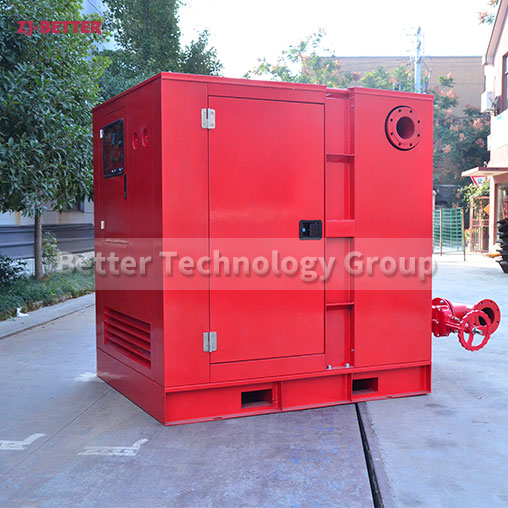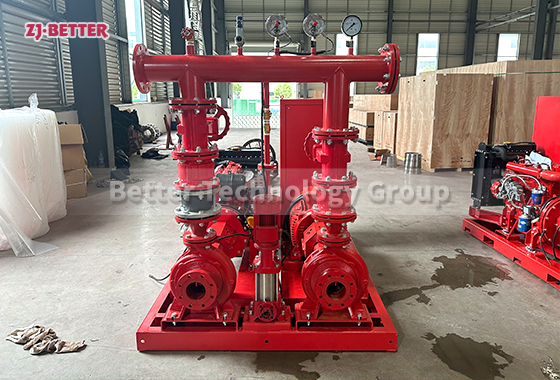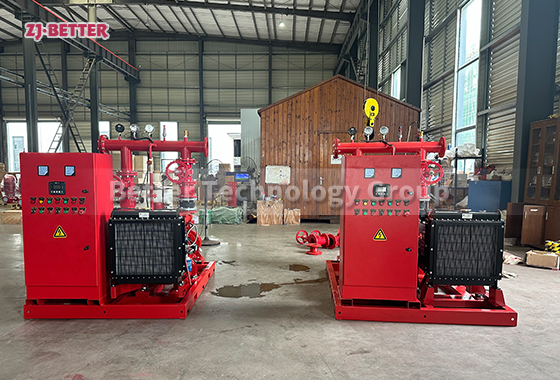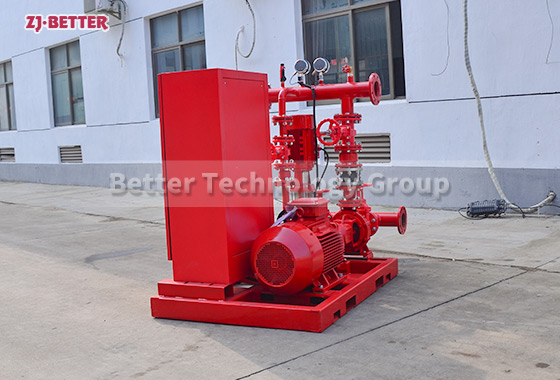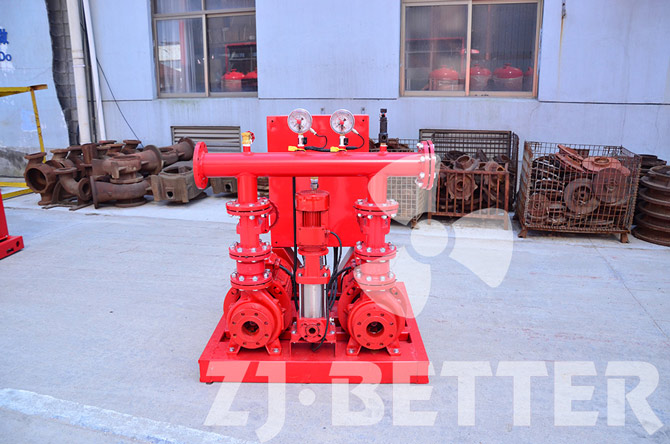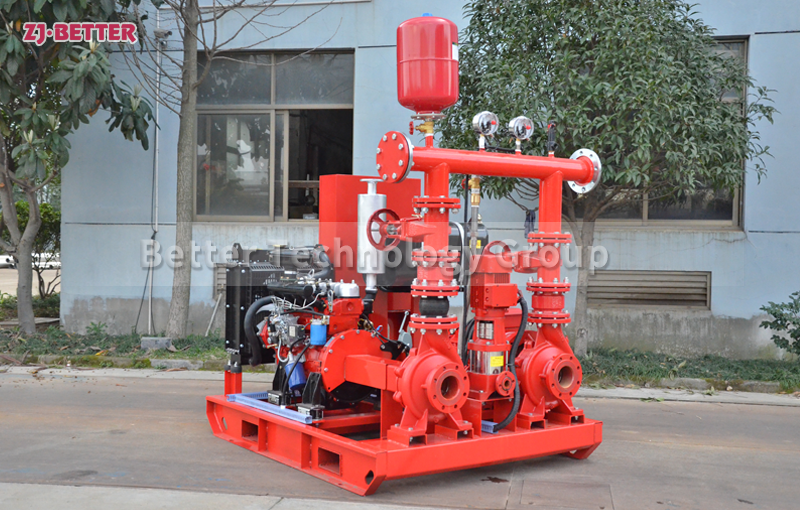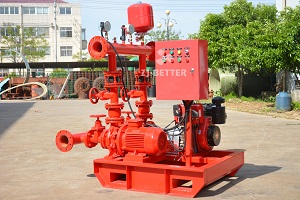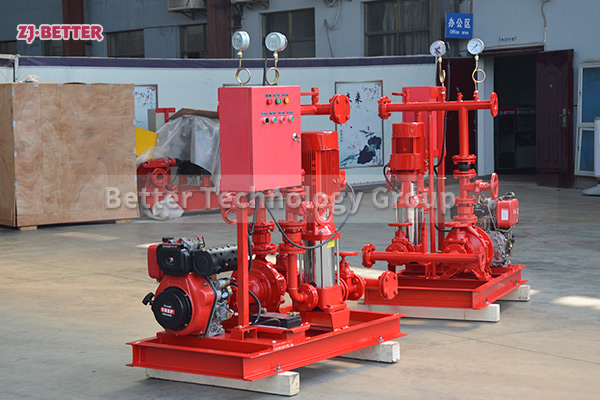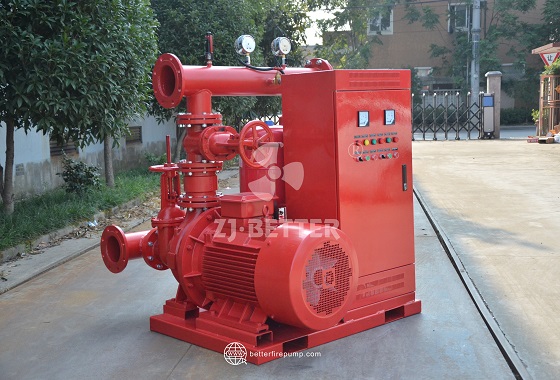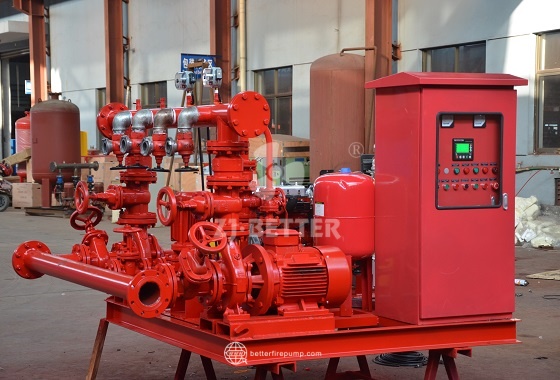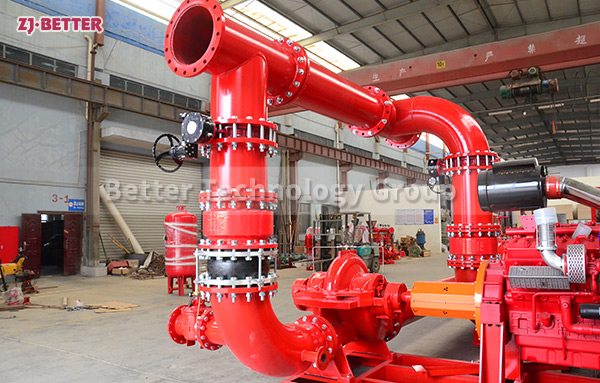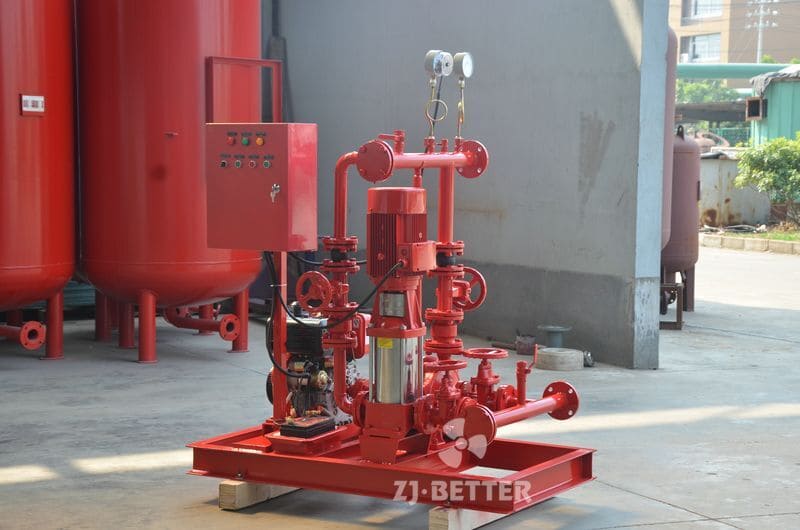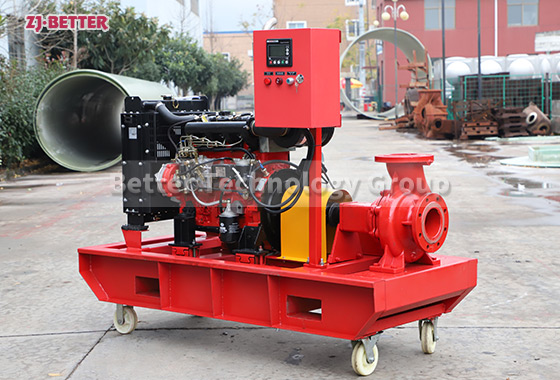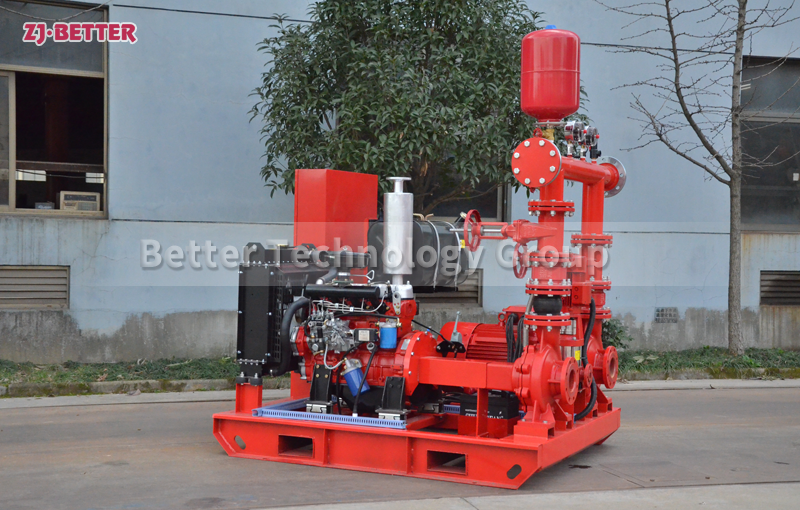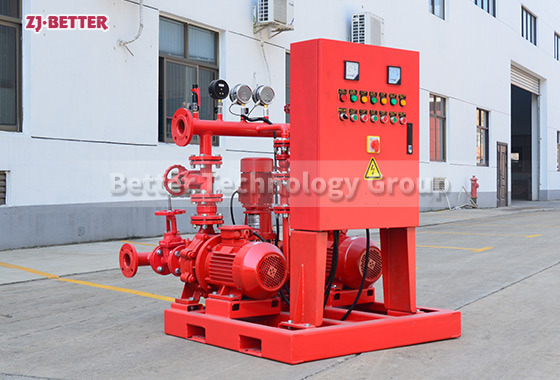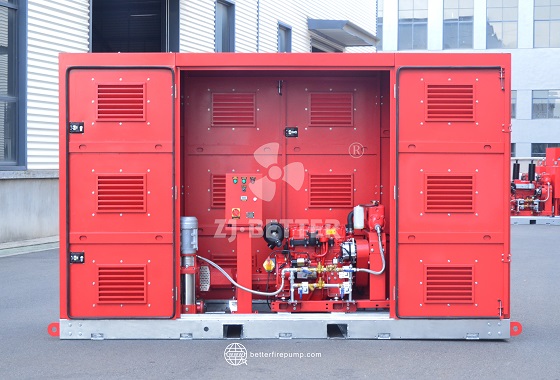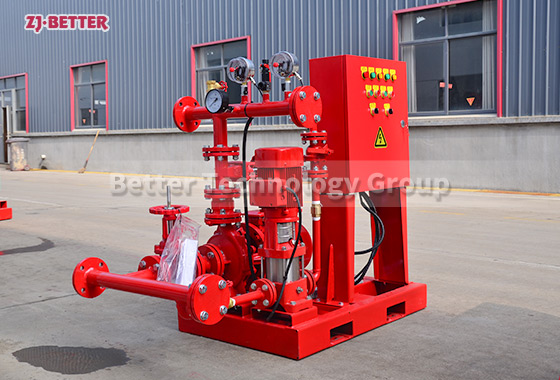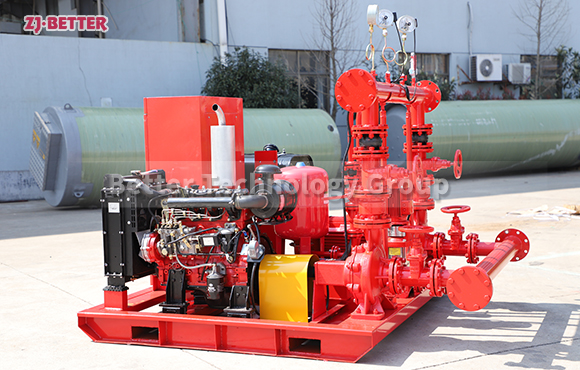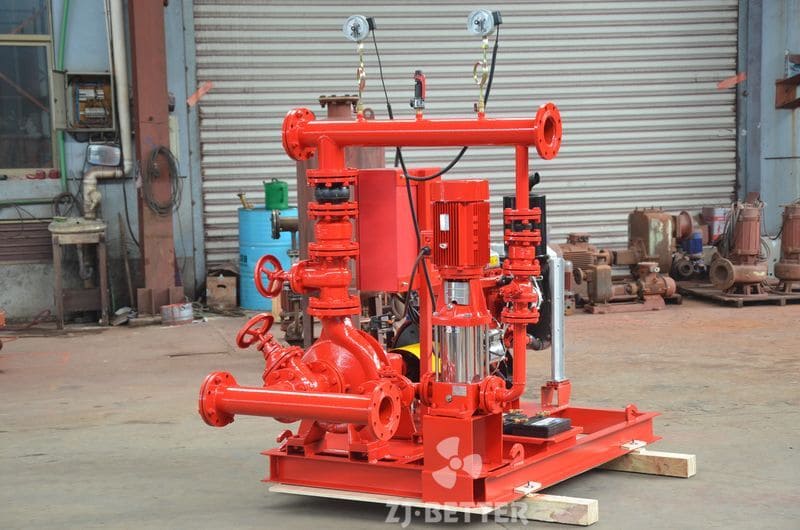
DJ Fire Pump Test Video
DJ series fire pump set consists of Diesel pump + Jockey pump and all accessories.
The pressure switch and control cabinet can automatically turn on/off three pumps-the electric pump and jockey pump operate when there is electricity and the diesel pump activates when the power cuts.
Fire pump package comprises a combination of diesel engine driven and electric motor driven jockey pumps that supply for fire suppression systems.
Fire pump package is required to comply with Local Civil Defense Authority regulations and International Codes of Practice e.g. National Fire Protection Association (NFPA).
Types of pumps used for fire service include: end suction, horizontal split case, vertical split case, vertical inline and vertical turbines.
1. Diesel engine pump, with capacity and head equal to electric pump, with fuel tank, water tank,fan, control box
2. Jockey pump, horizontal or vertical, capacity will be small, but head should be higher than electric and diesel engine pump
3. Control panel: Auto Control of electric pump, diesel engine pump and Jockey Pump with overload, over current protection。
4. Accessories: check valve, gate valve, pressure vessel, generally 0.6mpa, 1.0mpa, 1.6mpa, Pressure Gauge, Pressure Sensor, Common Pipe for Suction and Discharge, Flexible Joints and Flanges, Common Base plant.

